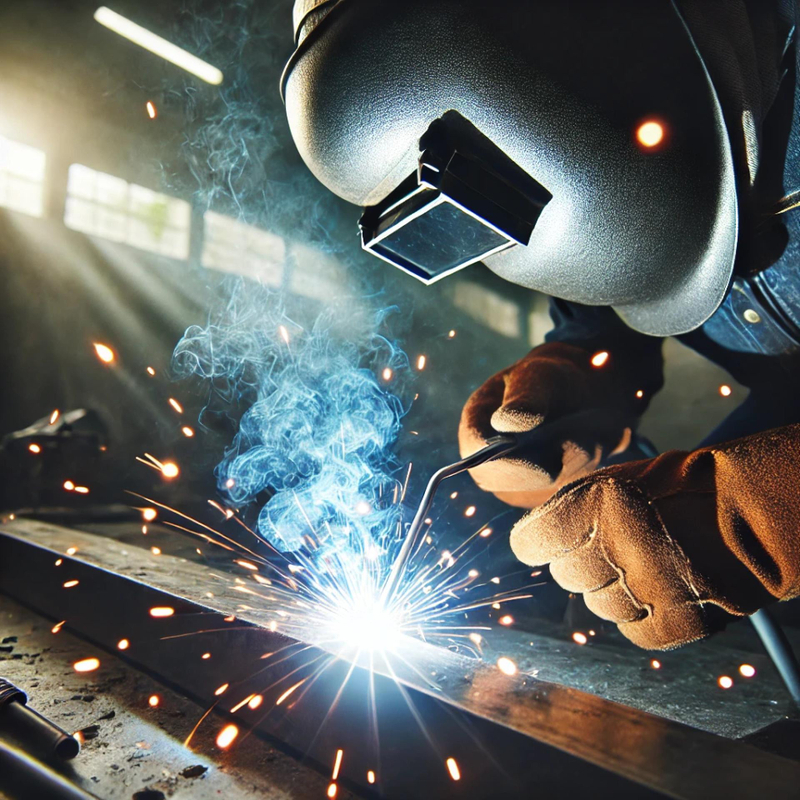The stick welding process, also known as stick metal arc welding (SMAW), is a popular method used in construction, repair, and fabrication. It is known for its versatility and effectiveness in outdoor environments. If you're new to welding, this guide will help you understand the basics and offer valuable tips to improve your skills.
Understanding the Stick Welding Process
The stick welding process involves using an electrode coated in flux to create an electric arc between the electrode and the metal workpiece. The intense heat melts both the electrode and the metal, fusing them together. The flux coating produces a protective gas and slag, which shields the weld from contamination.
Essential Equipment for Stick Metal Arc Welding
Before you start, ensure you have the necessary equipment:
- Welding Machine – Provides the required current.
- Electrodes – Choose the right type based on the material.
- Protective Gear – Helmet, gloves, and fire-resistant clothing.
- Chipping Hammer & Wire Brush – Used to remove slag after welding.
Tips for Beginners to Master Stick Metal Arc Welding
1. Choose the Right Electrode
Different electrodes work best for different materials and conditions. Beginners should start with E6013 or E7018, which are easier to use and provide smooth welds.
2. Maintain Proper Electrode Angle
Keeping the correct electrode angle is crucial for a good weld. A 10-15 degree angle in the direction of travel helps maintain arc stability and prevents defects.
3. Control Your Arc Length
A short arc length (about the diameter of the electrode) produces cleaner welds and reduces spatter. Avoid keeping the electrode too far from the workpiece, as it can cause weak welds.
4. Adjust the Amperage Correctly
Setting the correct amperage depends on the electrode size and metal thickness. If your welds are too hot, they may burn through the material; if too cold, they may not fuse properly.
5. Clean the Metal Surface
Although stick metal arc welding can handle dirty or rusty metal, cleaning the surface beforehand improves penetration and weld quality.
6. Practice Consistent Travel Speed
Moving too fast creates weak welds, while moving too slow can lead to excessive buildup. Maintain a steady travel speed for uniform bead appearance.
7. Use Both Hands for Stability
For better control, use both hands when welding. Resting your hand on a stable surface can reduce shakiness and improve precision.
8. Remove Slag Between Passes
Slag left over from previous welds can cause defects. Use a chipping hammer and wire brush to clean each pass before adding another layer.
Stick Welding Advantages
Stick welding advantages make it a preferred choice for many industries. Here are some key benefits:
- Works Well Outdoors – Unlike other methods, stick metal arc welding can be performed in windy or rainy conditions.
- Cost-Effective – Requires minimal equipment, making it a budget-friendly option.
- Versatile – Suitable for various metals, including steel, iron, and aluminum.
- Strong Welds – Provides deep penetration, ensuring durable welds even in thick materials.
- Portable – Compact welding machines allow easy transportation to different job sites.
Common Mistakes to Avoid
- Holding the Electrode Too Far
Keeping too much distance from the workpiece weakens the arc and causes spatter.
- Incorrect Amperage Setting
Too much or too little heat can lead to incomplete fusion or burn-through.
- Rushing the Weld
Moving too fast results in weak welds with poor penetration.
- Not Cleaning the Slag
Failing to remove slag between passes can lead to poor-quality welds.
Final Thoughts
Mastering the stick welding process takes time and practice. By following these beginner-friendly tips and avoiding common mistakes, you'll improve your welding skills and create strong, durable welds. Stick metal arc welding is an essential skill in many industries, and with the right techniques, you can achieve professional results.


